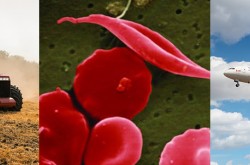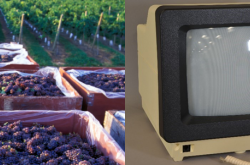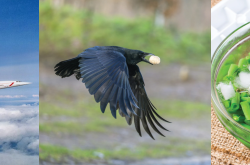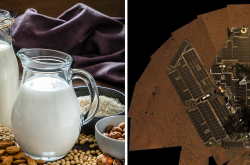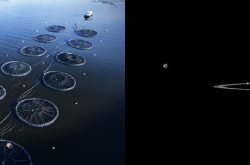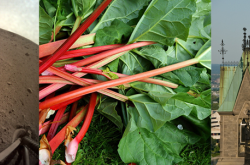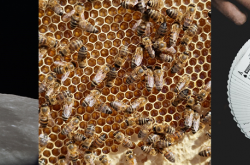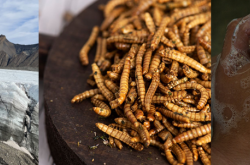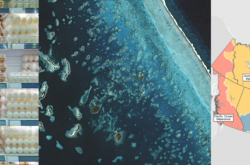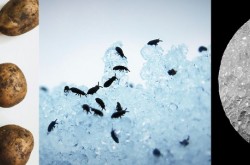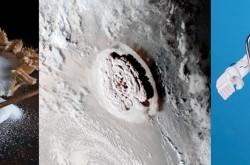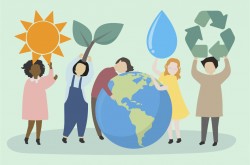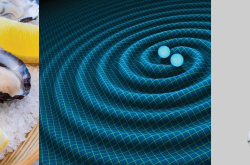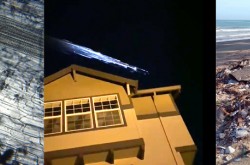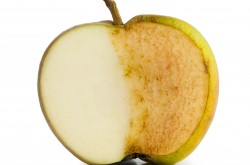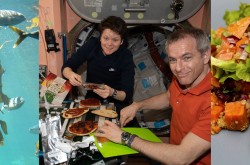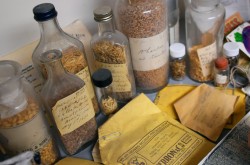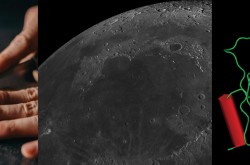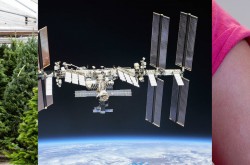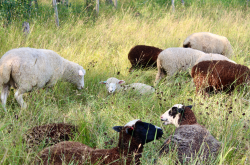3 things you should know about fruits and vegetables, eel reproduction, and volcanism

Meet Renée-Claude Goulet, Cassandra Marion, and Michelle Campbell Mekarski.
They are Ingenium’s science advisors, providing expert scientific advice on key subjects relating to the Canada Agriculture and Food Museum, the Canada Aviation and Space Museum, and the Canada Science and Technology Museum.
In this colourful monthly blog series, Ingenium’s science advisors offer up three quirky nuggets related to their areas of expertise. For the February edition, they provide context around the International Year of Fruits and Vegetables, the puzzling question of how eels reproduce, and what volcanism looks like across the solar system.

2021: The year of fruits and vegetables
The Food and Agriculture Organization of the United Nations (UN) has declared 2021 as the International Year of Fruits and Vegetables. This means that there is an international effort underway to raise awareness of the importance of fruits and vegetables for food security, our health, and the health of our planet.
Food waste is one of the problems the UN wants to emphasize this year. A report from Second Harvest — an organization dedicated to food rescue — indicates that in Canada, 58 per cent of all the food produced is wasted. The culprits? Logistical errors, poor conservation methods, waste due to quality or aesthetics, transportation, and many others. Waste at all levels translates into waste of natural resources, such as water and soil, which are both declining. To make matters worse, food found in landfills releases methane — a greenhouse gas that contributes to global warming.
So what can we do? The UN wants to mobilize us to fight these global problems by implementing technological and scientific solutions. This means finding ways to produce our fruits and vegetables more efficiently, reinforce and shorten our food chains, and reduce food waste. We must also work together to foster policies that will build a future where we eat all the food we produce.
As consumers, one of the most powerful actions we can take is to reduce food waste at home. For example, take the initiative to learn how to conserve food optimally, so it stays fresh longer. Look for “empty the fridge” recipes, to utilize the fruits and vegetables that are beginning to spoil in the refrigerator. If you haven’t already introduced a compost bin — instead of throwing out our food waste — the time is now.
At the food chain level, scientific and technological breakthroughs are increasingly allowing different actors to better preserve food. At the same time, digital technologies are improving food tracking and distribution networks to make them more effective. Finally, on the producers’ end, technologies that are now part of our daily lives give direct access to clients and local markets, thereby providing fresher products and reducing waste.
There is reason to be optimistic, so let’s do our part. Raise your smoothie in a toast — to a “fruitful” year ahead!
By Renée-Claude Goulet
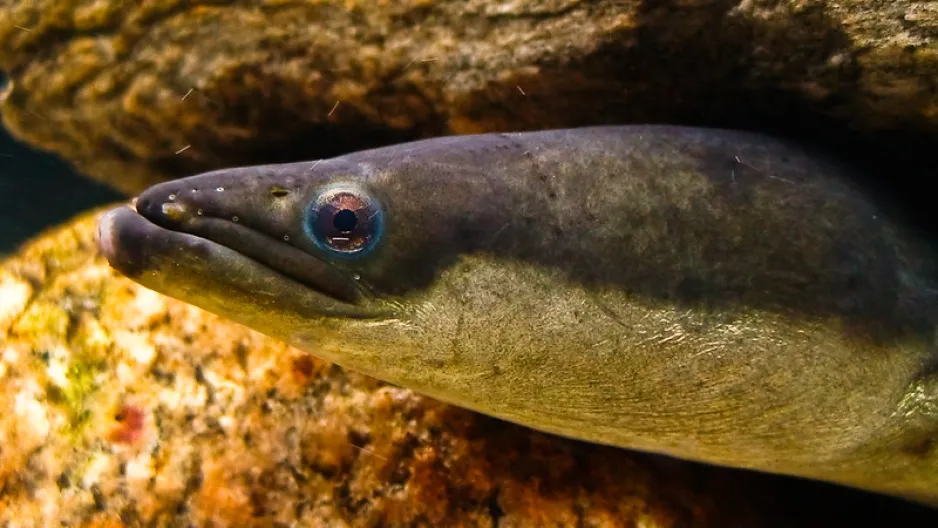
The eyes of this American eel hold secrets…
Slippery science: The age-old question of how eels reproduce
The scientific method is the messy, difficult, and wonderful process that helps us explore observations and answer questions about the world around us. Many imagine the scientific process to be a series of steps, leading in a straight line to an answer. In actuality, it’s more like exploring a jungle: wrong turns, false steps, and hidden treasures which, when combined, eventually lead to understanding. The process may be messy, but when done well, the answers are not.
A perfect example of this complexity is the question of how eels reproduce. These long, sinuous fishes are found in freshwater lakes and rivers across the world, and though many scientists throughout history have studied them (including Aristotle and Sigmund Freud!), no one has been able to figure out their complete life cycle. That’s right…humans have sent rovers to Mars and created artificial intelligence, but we have not figured out the mating habits of the eel.
The scientific method always starts with a question. In this case, how do eels reproduce? The next step is to collect all the information you have and construct a hypothesis, which is an educated guess about how something works. In the case of eels, many hypotheses have been made over the last millennia, including theories that eels originate from mud, rain, beetles, and the gills of other fish. After each of these hypotheses was tested and proven wrong, eel researchers had to readjust or create new hypotheses, based on the new information.
Over time, researchers accumulated more and more knowledge on the life cycle of eels. They discovered that eels go through stages of growth, much like humans: baby, toddler, child, adolescent, and adult. Like humans, each of these stages look and behave differently. They discovered that while adult eels inhabit fresh water, the babies (larvae) are born in the ocean, and then migrate to the rivers and lakes where they will spend the next decade or so of their adolescence and adulthood. Eel populations in Europe and North America actually originate from the Bermuda Triangle, a discovery that took one researcher — Johannes Schmidt — 18 years of trawling the Atlantic Ocean to find out!
Amazingly, the last step in the eel life cycle — precisely how and where the mature adults mate — remains a mystery. Researchers have yet to discover an eel egg, or track an adult eel to its exact mating grounds. Although the entire life cycle of the eels remains uncertain, each new discovery has resulted in both a clearer picture and more questions. This is part of the chaotic beauty of the scientific method: each discovery rattles the original question, producing fresh hypotheses, new areas for discovery, and more insight into the complexity of the world around us. And yes…one day, the scientific method will also tell us how eels reproduce.
By Michelle Campbell Mekarski
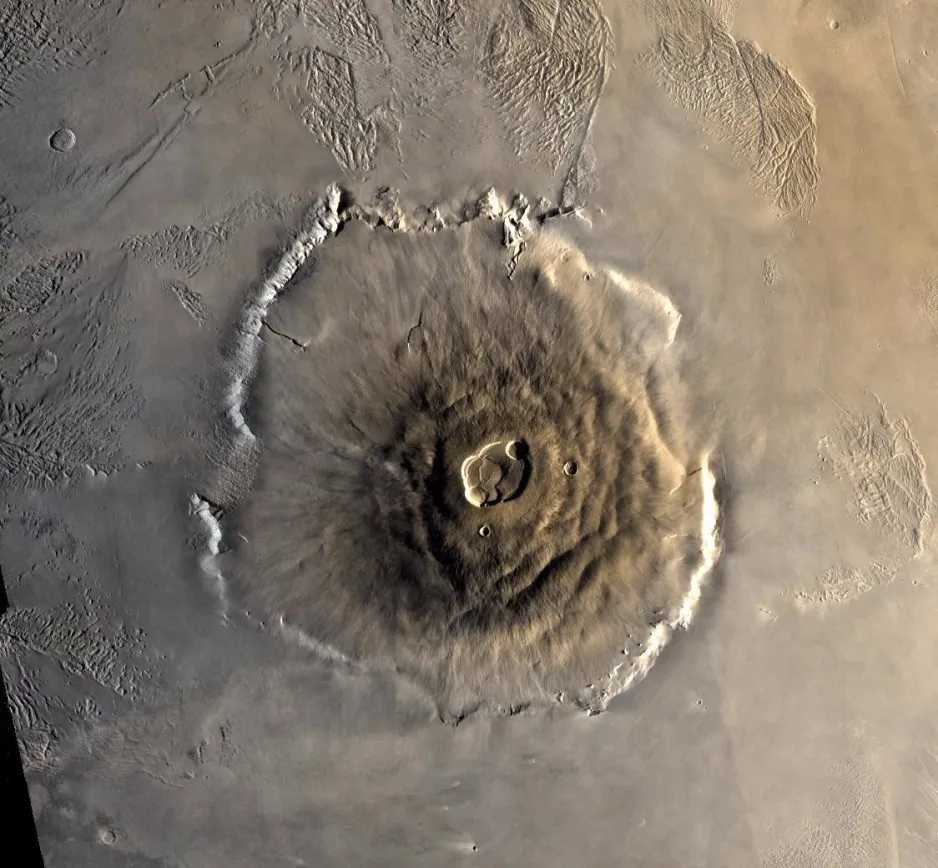
A colour mosaic image of Mars’ largest volcano, Olympus Mons, collected by the Viking 1 orbiter in 1978. The volcano is 600 km in diameter and 25 km high. Note the calderas at the summit.
Sometimes hot, sometimes not: Volcanism across the solar system
Earth has a rich volcanic history and active volcanoes, but it is not alone. Over the past four decades, discoveries made by spacecraft have identified evidence of past volcanism on all of the inner planets and on the Earth's Moon. Actively erupting volcanoes and cryovolcanoes (ice volcanoes) have also been observed on several of the outer solar system’s moons.
Volcanism is a mechanism that transfers heat from the interior of a planet or moon to the surface via volcanoes, which extrude molten rock, ash, and gases. In the inner solar system — Mercury, Venus, Mars and the Moon — volcanism is best likened to hot spot volcanism on Earth. Gentler and more effusive than the volcanoes that form at the boundaries of Earth’s tectonic plates, hot spot volcanism occurs when a plume of molten rock rises from deep within the mantle to generate fissures, cones, and lava flows — like the Hawaiian Islands. Mars is home to giant shield volcanoes like Olympus Mons, the largest volcano in the solar system at 25 km tall. Over a thousand volcanic edifices and vast lava flows have been identified on Venus, and some are likely still active today! Similarly, Mercury’s smooth plains are interpreted as massive lava flows, and the dark patches on the nearside of the Moon, lunar maria, were once seas of basaltic lava.
Volcanism in the outer solar system is comparatively different from that of the inner planets. Jupiter’s moon Io, the most volcanically active body in the solar system, hosts hundreds of active volcanoes in the form of giant molten lakes. These volcanoes erupt lava fountains and umbrella-shaped plumes of sulfur up to a 100 km high!
Aside from Io, cryovolcanism dominates the outer solar system, where water ice and nitrogen take the place of silicate rock at very low temperatures. Saturn’s icy moon Enceladus continuously blasts icy particles and water into space, which forms Saturn’s wispy outer E ring. These icy eruptions may come from hydrothermal vents beneath Enceladus’ ice-covered ocean. Neptune’s moon Triton hosts icy lava plains, and nitrogen geysers, which were observed erupting by Voyager 2 in 1989. Evidence of past cryovolcanism even exists on the dwarf planets Pluto and Ceres.
Evidently, volcanism is a common process in planetary evolution. With several new exploratory missions on the horizon and telescopes pointed at the sky, we will continue to learn more about our planetary neighbours and their fiery or icy pastimes.
By Cassandra Marion










